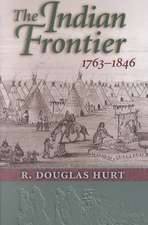Dreaming of Sheep in Navajo Country: Weyerhaeuser Environmental Books
Autor Marsha Weisiger, William Crononen Limba Engleză Paperback – 14 noi 2011
Din seria Weyerhaeuser Environmental Books
-
 Preț: 200.36 lei
Preț: 200.36 lei -
 Preț: 182.30 lei
Preț: 182.30 lei -
 Preț: 200.90 lei
Preț: 200.90 lei -
 Preț: 148.45 lei
Preț: 148.45 lei -
 Preț: 200.64 lei
Preț: 200.64 lei -
 Preț: 200.75 lei
Preț: 200.75 lei -
 Preț: 237.45 lei
Preț: 237.45 lei -
 Preț: 284.21 lei
Preț: 284.21 lei -
 Preț: 233.76 lei
Preț: 233.76 lei -
 Preț: 235.34 lei
Preț: 235.34 lei -
 Preț: 232.45 lei
Preț: 232.45 lei -
 Preț: 228.59 lei
Preț: 228.59 lei -
 Preț: 239.75 lei
Preț: 239.75 lei -
 Preț: 231.46 lei
Preț: 231.46 lei -
 Preț: 228.96 lei
Preț: 228.96 lei -
 Preț: 224.72 lei
Preț: 224.72 lei -
 Preț: 227.62 lei
Preț: 227.62 lei -
 Preț: 233.37 lei
Preț: 233.37 lei - 23%
 Preț: 651.12 lei
Preț: 651.12 lei -
 Preț: 225.71 lei
Preț: 225.71 lei -
 Preț: 227.62 lei
Preț: 227.62 lei -
 Preț: 239.16 lei
Preț: 239.16 lei -
 Preț: 232.45 lei
Preț: 232.45 lei -
 Preț: 232.23 lei
Preț: 232.23 lei -
 Preț: 226.67 lei
Preț: 226.67 lei -
 Preț: 234.73 lei
Preț: 234.73 lei -
 Preț: 229.55 lei
Preț: 229.55 lei -
 Preț: 219.46 lei
Preț: 219.46 lei -
 Preț: 218.62 lei
Preț: 218.62 lei -
 Preț: 439.38 lei
Preț: 439.38 lei
Preț: 235.34 lei
Nou
Puncte Express: 353
Preț estimativ în valută:
45.04€ • 46.66$ • 37.59£
45.04€ • 46.66$ • 37.59£
Carte tipărită la comandă
Livrare economică 21 martie-04 aprilie
Preluare comenzi: 021 569.72.76
Specificații
ISBN-13: 9780295991412
ISBN-10: 0295991410
Pagini: 418
Ilustrații: 29 illustrations, 5 maps
Dimensiuni: 152 x 228 x 31 mm
Greutate: 0.59 kg
Editura: MV – University of Washington Press
Seria Weyerhaeuser Environmental Books
ISBN-10: 0295991410
Pagini: 418
Ilustrații: 29 illustrations, 5 maps
Dimensiuni: 152 x 228 x 31 mm
Greutate: 0.59 kg
Editura: MV – University of Washington Press
Seria Weyerhaeuser Environmental Books
Recenzii
"I cannot think of any book that weaves a more compelling narrative from the collision of Indian, American, and scientific understandings of nature. Weisigers painstaking reconstruction of the regions biotic communities and her careful attention to biologists thinking and their meanings for historians places this book in a class by itself. Louis Warren, University of California, Davis"An ambitious, masterful work that addresses fundamental issues about relationships of power between the state and the people it attempts to control, the relationship between nature and cultures, and conflicts between different ways of narrating stories. Sherry L. Smith, Southern Methodist University
Cuprins
Notă biografică
Descriere
How the misguided policy of reducing livestock on the Navajo reservation in the 1930s is still felt today by the people and the land























